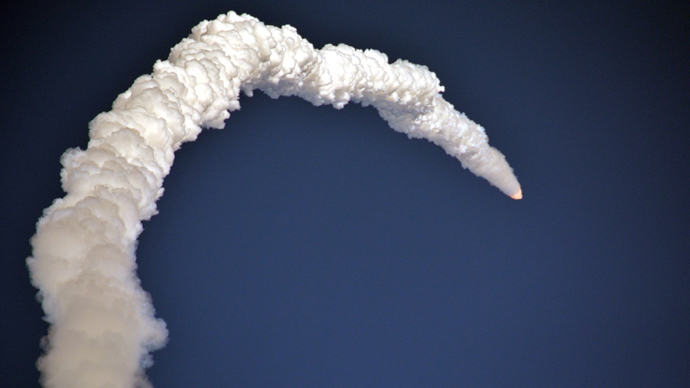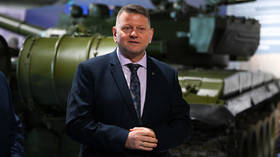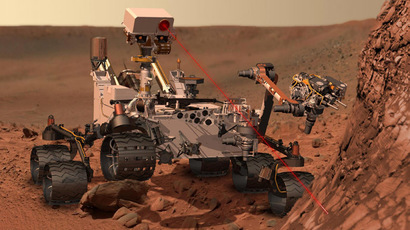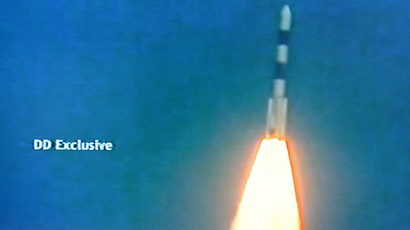India blasts into elite space club with successful launch of cryogenic rocket

India has successfully delivered its first domestically-designed cryogenic rocket, joining only a handful of countries that possess the leading technology. The breakthrough caps more than two decades of attempts to master supercool fuels.
The 415-tonne GSLV-D5 took off at 4.18 pm on Sunday from the
Satish Dhawan Space Centre on Sriharikota Island off the
south-eastern coast of the country. Twelve minutes later it
placed the 1,982kg GSAT-14 communication satellite into orbit
36,000 kilometers from Earth to loud cheers from scientists and
engineers at the control center.
“The mission was to flight-test the Indian cryogenic engine, it
functioned as expected and required for the mission,” said K
Radhakrishnan, the chairman of Indian Space Research Organization
(ISRO), the space agency in charge.
“It is a very important step for the country. There are not
many in the world who have mastered this technology of cryogenic
engine, India is one of them.”
The success – which came at a cost of $58 million for the rocket
and satellite – will open a pathway for India to become a bigger
player in the profitable and growing satellite-launching market.
A cryogenic rocket like GSLV-D5, which uses liquid hydrogen and
liquid oxygen, is more efficient than space launchers, using more
conventional liquid and solid fuels, and this allows it to
deliver heavier payloads into orbit. But the technology is
demanding in design and operation.
The United States, Russia, France, Japan and China as well as the
European Space Agency are the only entities that have performed
similar launches in the past.
Oxygen has to be liquefied at –183 C and hydrogen at –253 C. Just
to pump the fuel into a rocket requires a specially constructed
pump running at 40,000 revolutions per minute.
India’s journey to the landmark has been fraught with
difficulties. It initially attempted to buy ready-made technology
from Russia straight after the collapse of the USSR, but the move
was controversially scuppered by the US, which said that the
rocket could be used for military purposes.
The country was then forced to attempt to create its own version,
in the meantime relying on engines provided by Russia at a cost
from 2001.
But a satellite launch in April 2010 ended in spectacular
disaster, when a Russian-made engine failed to ignite, and the
satellite crashed into the Bay of Bengal. And a launch in August
last year had to be abandoned at the last minute when it was
discovered that fuel was leaking from the rocket.
Despite some accusations of misguided priorities in a country
that still has millions living below the absolute poverty line,
the national space program has become a cornerstone of India’s
identity as an emerging power.
In November last year it launched a spacecraft destined for
Mars, and
if the mission succeeds it will be the first Asian country to
reach the planet.














